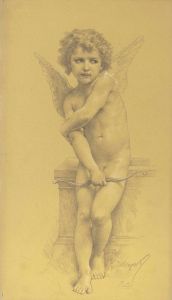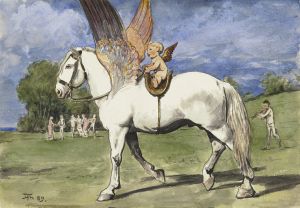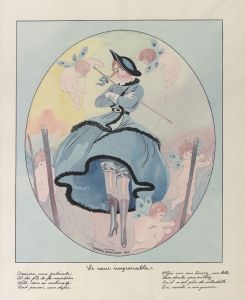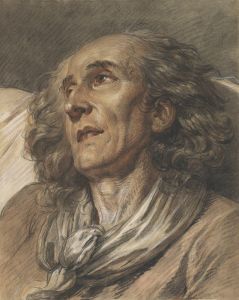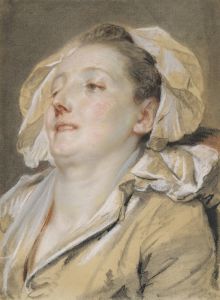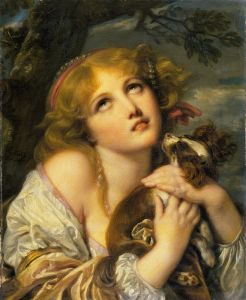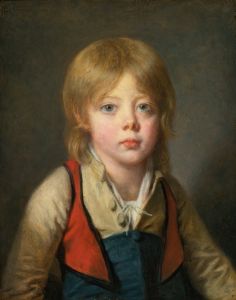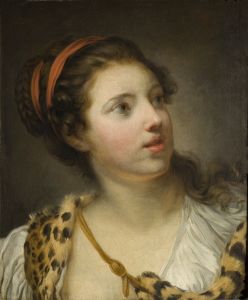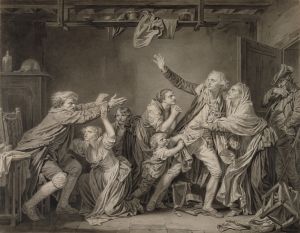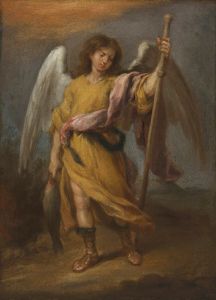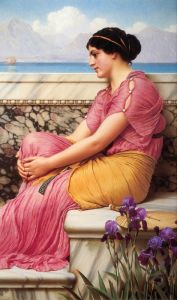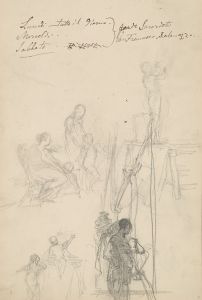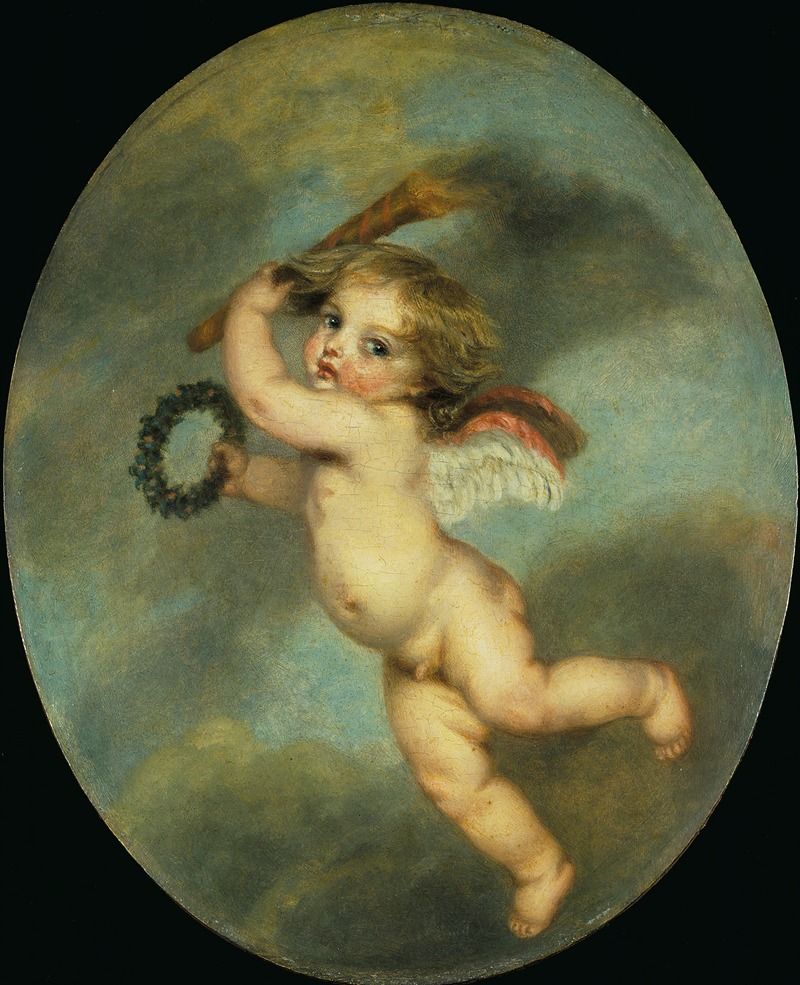
Flying Cupid with a Torch
A hand-painted replica of Jean-Baptiste Greuze’s masterpiece Flying Cupid with a Torch, meticulously crafted by professional artists to capture the true essence of the original. Each piece is created with museum-quality canvas and rare mineral pigments, carefully painted by experienced artists with delicate brushstrokes and rich, layered colors to perfectly recreate the texture of the original artwork. Unlike machine-printed reproductions, this hand-painted version brings the painting to life, infused with the artist’s emotions and skill in every stroke. Whether for personal collection or home decoration, it instantly elevates the artistic atmosphere of any space.
Jean-Baptiste Greuze was a prominent French painter known for his genre scenes and portraits, particularly during the 18th century. One of his works, "Flying Cupid with a Torch," exemplifies his skill in capturing delicate and emotive subjects. This painting, like many of Greuze's works, reflects the Rococo style that was prevalent during his time, characterized by its ornate and decorative qualities.
"Flying Cupid with a Torch" depicts the mythological figure of Cupid, the Roman god of love, who is often portrayed as a winged child or cherub. In this painting, Cupid is shown in flight, holding a torch, which is a common symbol associated with love and passion. The torch represents the light of love, illuminating the path for lovers and symbolizing the burning intensity of romantic affection.
Greuze's depiction of Cupid is notable for its attention to detail and the soft, delicate brushwork that brings the figure to life. The use of light and shadow in the painting highlights Cupid's form, emphasizing the ethereal and otherworldly nature of the mythological subject. The background of the painting is typically subdued, allowing the figure of Cupid to stand out as the focal point of the composition.
Jean-Baptiste Greuze was born in 1725 in Tournus, France, and he gained recognition for his ability to convey emotion and narrative through his paintings. He studied at the Royal Academy of Painting and Sculpture in Paris, where he developed his distinctive style. Greuze's work often focused on themes of morality, sentimentality, and domestic life, which resonated with the tastes of the French bourgeoisie during the Enlightenment period.
While "Flying Cupid with a Torch" is not as widely known as some of Greuze's other works, it still reflects his mastery of the Rococo style and his ability to infuse his paintings with emotion and narrative depth. Greuze's work was highly regarded during his lifetime, and he enjoyed the patronage of influential figures, including members of the French aristocracy.
In addition to his mythological and genre scenes, Greuze was also known for his portraits, which often captured the character and personality of his subjects with great sensitivity. His ability to convey emotion through facial expressions and body language made his portraits particularly compelling.
Despite his success, Greuze's reputation declined towards the end of his career, as the Neoclassical movement began to gain prominence, favoring a return to classical simplicity and restraint over the ornate style of the Rococo. Nevertheless, Greuze's contributions to the art world remain significant, and his works continue to be appreciated for their technical skill and emotional resonance.
Today, "Flying Cupid with a Torch" and other works by Jean-Baptiste Greuze can be found in various art collections and museums, where they continue to be studied and admired by art enthusiasts and scholars alike. Greuze's legacy as a master of the Rococo style and a painter of emotional depth endures, reflecting the cultural and artistic values of his time.





